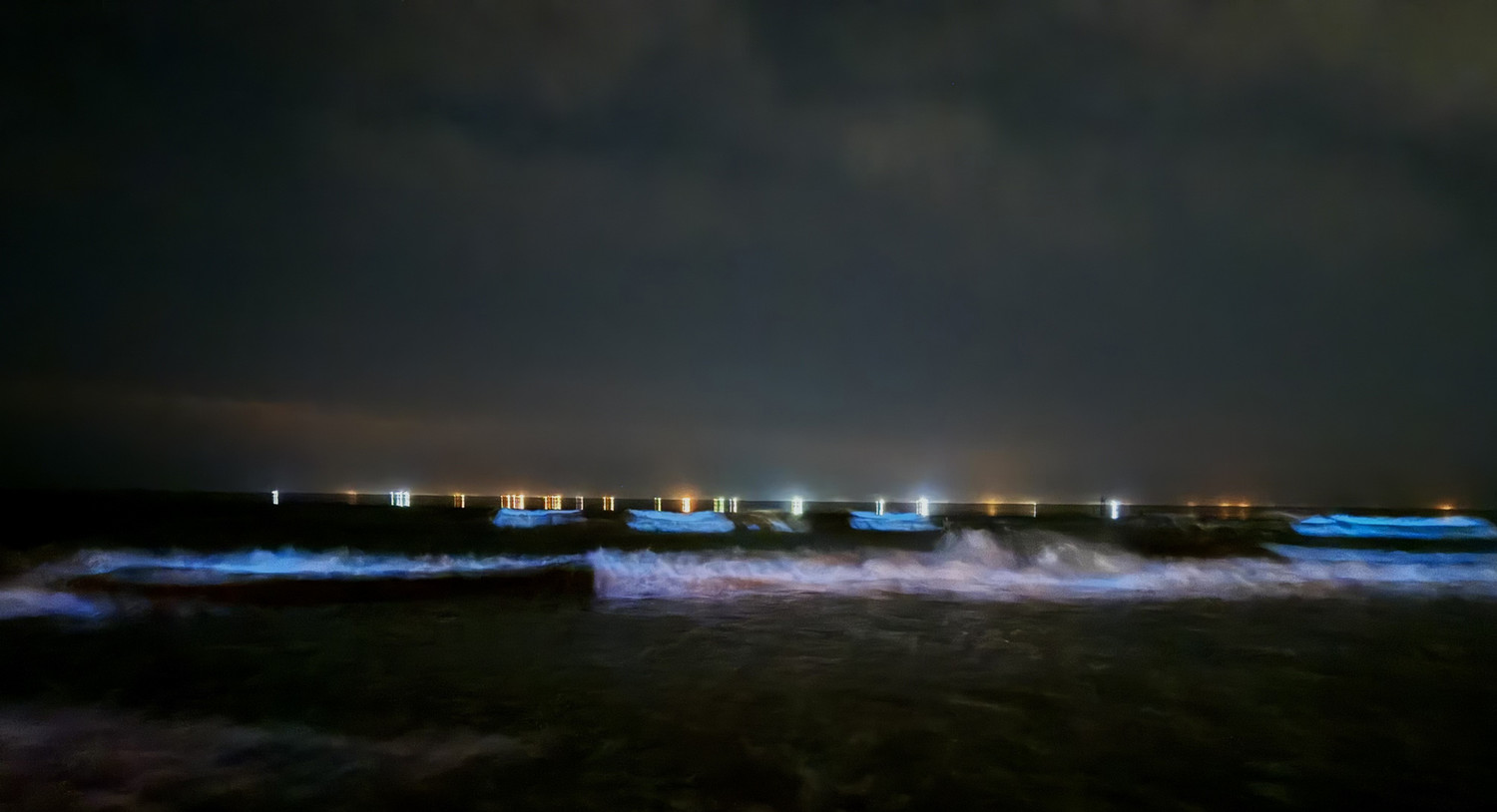Galveston Area Beaches Light Up With Bioluminescent Phytoplankton

Local Facebook groups have lit up with reports of glowing waters in the Galveston area. Experts believe the bioluminescent phenomenon is a phytoplankton called Noctiluca scintillans, aptly nicknamed “sea sparkle,” which typically blooms in our region yearly.
“During this time of year off the coast of Galveston and Bolivar, the temperature of the water is just right for the organism to grow in numbers,” said Dr. Jamie Steichen, a professor in the marine biology department at Texas A&M University at Galveston and research scientist in the phytoplankton dynamics laboratory. “During these blooms, there are enough cells present to where we can actually see the blue light in the crashing waves that is emitted from the cells. Phytoplankton will ‘bloom,’ or rapidly increase in cell concentration, when temperature, light and nutrient concentrations are sufficient for rapid cell growth.”
Noctiluca scintillans is found in coastal environments across subtropical regions, like Galveston, as well as tropical and temperate regions. Its cells can be very large for phytoplankton, measuring from 0.4 to 1.0 millimeter. According to Steichen, some phytoplankton can form a temporary cyst stage, or dormant stage, when water conditions become unfavorable for growth. When conditions improve, the phytoplankton re-enter a growth phase of their life cycle and take the form of their adult phase. Essentially, when water temperature, light and nutrients are just right for them to grow, these phytoplankton can be reactivated, which is happening now off the coast of Galveston.
Bioluminescence is seen in many different kinds of organisms, from plankton to fungi, anglerfish to fireflies and plenty of living things in between.

“Bioluminescence is very common in the ocean and in some terrestrial organisms,” said Dr. Anja Schulze, marine biology professor and assistant department head of graduate affairs at the Galveston campus. “It evolved multiple times throughout evolutionary history. Bioluminescence occurs in certain bacteria, in unicellular plankton, in many animals and even in fungi.”
Schulze continued, “[Bioluminescence] can have many different functions, such as predator deterrence, luring prey or luring a sexual partner. Sometimes we have no idea what the function is, and it’s possible that there isn’t always one. Theoretically, bioluminescence could be just a byproduct of some other physiological process.”
The best time to view the bioluminescent bloom is after the sun has completely set. Viewing during a new moon and in an area with little light pollution will help with visibility. This species of phytoplankton does not produce toxins, so it is generally safe to be in the water with it. Blooms may be visible for just one night or can extend to a few days, depending on water conditions, so don’t wait if you are hoping to catch a glimpse of the glowing blue gulf.
Media Contact
Taylor Bounds
bounds@tamu.edu